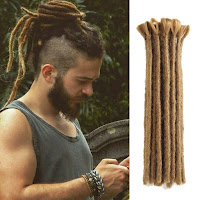How to Set our Hairs For:Party, Meeting, Date, Office, or as usual in home.
Set your hairs as you want. Hairstyle should be cool or classy.like:-
*Please use of hair wax and hair spray and hair dryer to get a good hold in hairs.
Firstly Gently Wash Your Hairs- with any good shampoo like beardo or bear shampoo.
Secondly Complete Dry Your Hairs- with the help of hair dryer with cold wind.
Lastly Set Your Hairs as You Want- with the help of comb, dryer with hot wind, wax- "wax should be a good quality".
*Please wash your complete hairs till the end before going to the bed and please use some oil in the night while you sleep.
Types of Haircut Styles
The undercut is a hairstyle that was fashionable from the 1910s to the 1940s, predominantly among men, and saw a steadily growing revival in the 1980s before becoming fully fashionable again in the 2010s. Typically, the hair on the top of the head is long and parted on either the side or center, while the back and sides are buzzed very short.It is closely related to the curtained hair of the mid-to-late 1990s, although those with undercuts during the 2010s tend to slick back the bangs away from the face.
The quiff is a hairstyle that combines the 1950s pompadour hairstyle, the 1950s flattop, and sometimes a mohawk. It was born as a post-war reaction to the short and strict haircuts for men.The hairstyle was a staple in the British 'Teddy Boy' movement, but became popular again in Europe in the early 1980s and faced a resurgence in popularity during the 1990s.
Featured snippet from the web
Featured snippet from the web
The quiff is a hairstyle that combines the 1950s pompadour hairstyle, the 1950s flattop, and sometimes a mohawk. ... The hairstyle was a staple in the British 'Teddy Boy' movement, but became popular again in Europe in the early 1980s and faced a resurgence in popularity during the 1990s.
The pompadour is a hairstyle named after Madame de Pompadour (1721–1764), a mistress of King Louis XV of France.Although there are numerous variations of the style for men, women, and children, the basic concept is having a large volume of hair swept upwards from the face and worn high over the forehead, and sometimes upswept around the sides and back as well.
Despite the name, this hairstyle has nothing in common with the hairstyle of Madame de Pompadour, who wore her hair back rather than up, with no extra volume on the top. The name was coined in the 20th century.
A crew cut is a type of haircut in which the upright hair on the top of the head is cut relatively short,graduated in length from the longest hair that forms a short pomp (pompadour) at the front hairline to the shortest at the back of the crown so that in side profile, the outline of the top hair approaches the horizontal.Relative to the front view, and to varying degrees, the outline of the top hair can be arched or flattened at the short pomp front and rounded or flattened over the rest of the top to complement the front hairline, head shape, face shape and facial features.The hair on the sides and back of the head is usually tapered short, semi-short, or medium.

Buzz cuts rose to popularity with the advent of manual hair clippers by the Serbian inventor Nikola Bizumić in the late 19th century.These clippers were widely used by barbers to chop hair close and fast. The clipper accumulates hair in locks to rapidly remove the hair from the head. This type of haircut was normal where strict grooming conventions were in effect.
A side part haircut is a men's and boys' hairstyle that has hair long enough to comb on top, a defined or deconstructed side part, and a short, semi-short, medium, long, or extra long back and sides.The style is also known by other names including taper cut, regular taper cut, side-part and standard haircut; as well as short back and sides, business-man cut and professional cut, subject to varying national, regional, and local interpretations of the specific taper for the back and sides
In ancient Egypt, examples of Egyptians wearing locked hairstyles and wigs have appeared on bas-reliefs, statuary and other artifacts. Mummified remains of ancient Egyptians with locked wigs have also been recovered from archaeological sites.
During the Bronze Age and Iron Age many peoples in the Near East, Asia Minor, Caucasus, East Mediterranean and North Africa such as the Sumerians, Elamites, and Ancient Egyptians were depicted in art with braided or plaited hair and beards. However, braids are not dreadlocks, and it is not always possible to tell from these images which are being depicted.

Liberty spikes trace their origins to the Ancient Britons.Warriors washed their long hair in lime water, which also bleached it blond.This hairstyle was highly symbolic as a badge of honor and manhood: Celts were not allowed to spike or cut their hair until they had killed an enemy.After the subjugation of Britain spiked hair fell out of use in favor of short Roman haircuts.In the silent film era some actors, like comedian Harold Lloyd, experimented with spiked hair to stand out from the crowd, although this trend did not catch on with ordinary people. This changed in the 1970s when the emerging British punk subculture chose messy, choppy hair in reaction to the long smooth styles worn by hippies and disco fans. Originally the spikes were small, as worn by modern-day pop-punk fans, but by the 1980s this had evolved to tall liberty spikes, sometimes over a foot in length

Long hair is a hairstyle where the head hair is allowed to grow to a considerable length. Exactly what constitutes long hair can change from culture to culture, or even within cultures. For example, a woman with chin-length hair in some cultures may be said to have short hair, while a man with the same length of hair in some of the same cultures would be said to have long hair.
Males having short, cut hair are in many cultures viewed as being under society's control, such as while in the military or prison or as punishment for a crime. Long lustrous female hair is generally rated attractive by both men and women across cultures.The prevalence of trichophilia (hair partialism or fetishism) is 7% in the population, and very long hair is a common subject of devotion in this group.





















